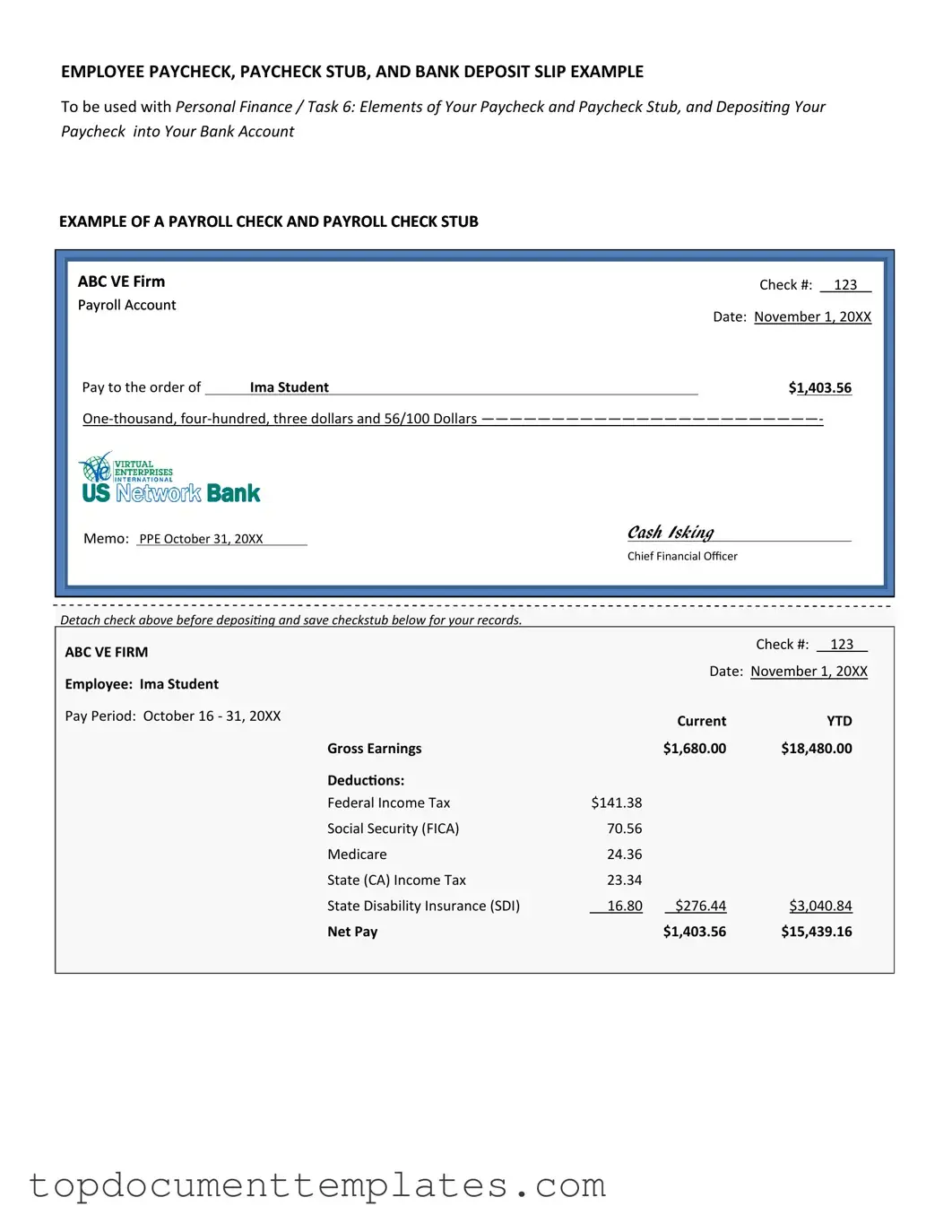The Payroll Check form serves as a crucial document in the process of compensating employees for their work. This form typically includes essential details such as the employee's name, identification number, and pay period, ensuring that all necessary information is readily accessible. Additionally, it outlines the gross pay, deductions, and net pay, providing a clear breakdown of how the final amount is calculated. Employers often use this form to maintain accurate records for accounting and tax purposes, reinforcing the importance of compliance with labor laws. Furthermore, the Payroll Check form can also include information about overtime hours worked, bonuses, and any other relevant compensation adjustments. By standardizing this information, both employers and employees can easily understand the payment structure, fostering transparency and trust in the employer-employee relationship.
